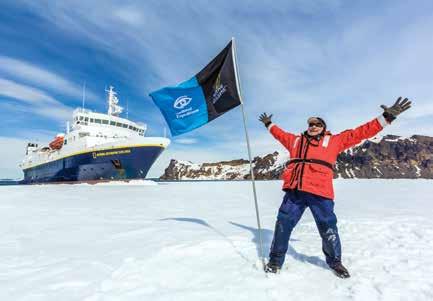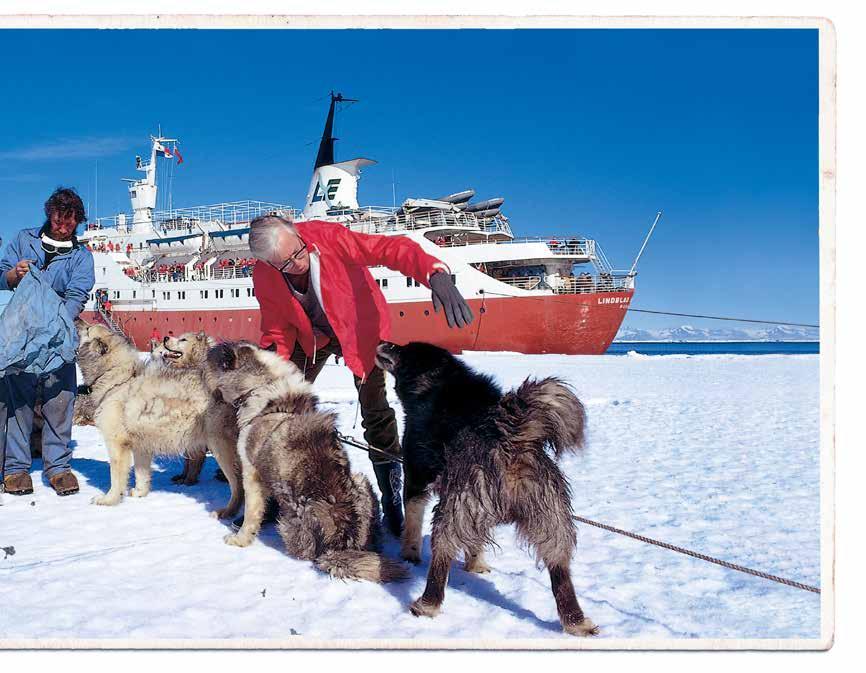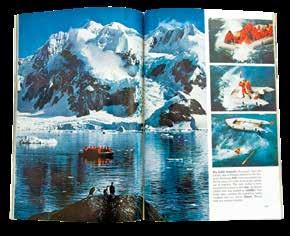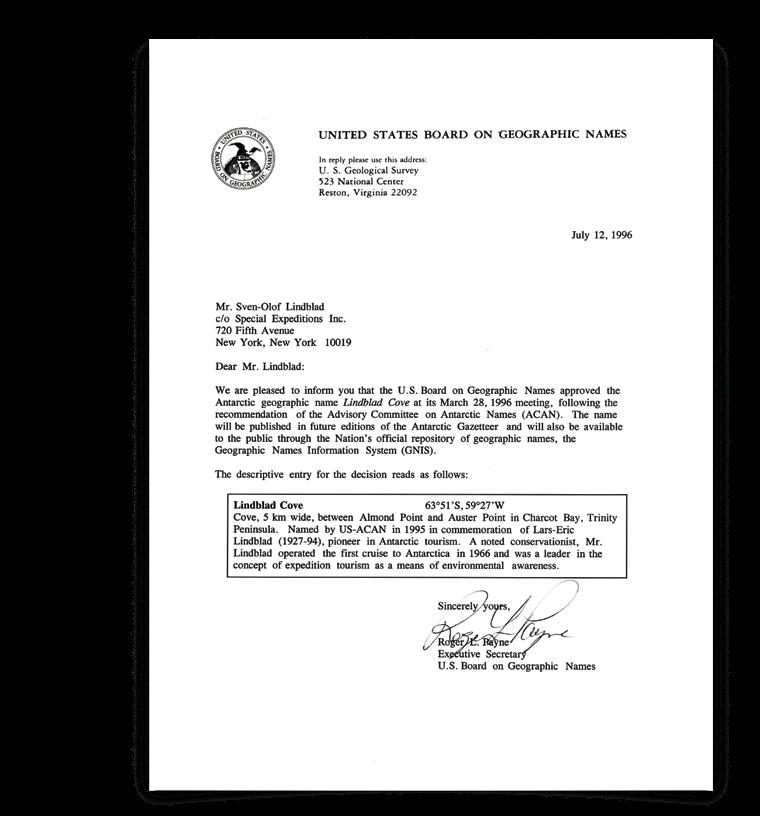
4 minute read
What is the Travel Operator’s Experience?
Now, more and more cruise lines have begun to add Antarctica to their itineraries. And many tour operators, accustomed to voyaging in “tamer” waters are leasing, or even building, adventure ships to offer Antarctic voyages, too. Given the number of reported ship mishaps in Antarctic waters, it is not hard to conclude many travelers and operators alike may be undertaking this too lightly. Make your selection based on ownership as well as expertise: control matters.
While there are many committed, conscientious operators in Antarctica, literally no other company has the length of tenure, hands-on experience and expertise of Lindblad Expeditions. The company owns National Geographic Endurance, National Geographic Resolution, National Geographic Explorer, and National Geographic Orion, not as a matter of fact, but of faith. The company believes that having ships under their control, and a completely coordinated staff and crew is vital for safety reasons. But equally important, they believe it’s vital for service reasons— to provide an authentically adventurous and meaningful expedition experience.
Joining forces in 2004, Lindblad Expeditions and National Geographic formed an alliance with the goal of “Inspiring people to explore and care about the planet.”
A cruise director employed by a leasing travel company coordinating with a Captain and crew who work for a different owner simply cannot produce the teamwork that is the hallmark of Lindblad Expeditions. The synergy that exists among the expedition team members—expedition leaders and their staff, working with the Captains and their officers—fosters a community of service to the guest experience that is highly rewarding.
On September 20, 1958, Lars-Eric Lindblad, considered to be the “father of ecotourism,” opened the doors to his new company, Lindblad Travel, in New York City. As his company continued to grow, he searched for new places on the map. In 1966, Lindblad brought the first group of “citizen explorers” to Antarctica. He initially operated his pioneering Antarctic voyages with chartered vessels. However, within two years he decided to build his own ship—to run expeditions the way he wanted, and to exercise the level of control and reliability he considered vital. The M.S. Lindblad Explorer was launched in 1969. With a reinforced hull that allowed it to penetrate the ice, she soon traveled farther north and south than any passenger ship had ever ventured before.
Over the subsequent 50+ years since Lars-Eric’s pioneering voyage, the collective polar intelligence of Lindblad Expeditions has grown exponentially through consecutive voyages. As a result, Lindblad knows Antarctica to a greater degree than any other company voyaging there. The company systematically continues the surveying practices Lars-Eric began in 1966. In recent years, they’ve continually recorded routes by satellite positioning and overlaid each position with the water depth taken by the crew at that spot to create “safe tracks,” enabling Lindblad ships to return to exciting, off-the-beaten-path spots. And their on-paper survey archive, dating back to the original Lindblad Explorer, has enabled the company to accumulate considerable data on safe anchorages—data the company regularly shares with the British Hydrographic Agency. Under the direction of Lindblad V.P. Nautical, Captain Leif Skog, the company has initiated a crowdsourcing project, enlisting other polar travel operators in sharing sea floor data, historic and present, to maximize knowledge in the interest of maximizing polar travel safety.
After so many consistent years of surveying and recording, Lindblad officers have more data at their fingertips on the Bridge than many government hydrographic agencies. In 1996, the U.S. Geological Society recognized Lindblad’s contribution to Antarctica by officially designating a section of Trinity Peninsula as “Lindblad Cove.” Their letter stated that, “A noted conservationist, Mr. Lindblad operated the first cruise to Antarctica in 1966 and was a leader in the concept of expedition tourism as a means of environmental awareness.”
Since Lars-Eric’s day, Lindblad Expeditions has remained committed to owning and operating their own expedition ships. Their pioneering history and years of experience, including having safely introduced thousands of exhilarated guests to the wonders of Antarctica, provides a profound advantage in providing travelers with a genuinely exploratory experience.
Lars-Eric Lindblad in the 1970s. Once common, dog teams were banned in the 1991 Environmental Protocol to the Antarctic Treaty.

National Geographic Magazine, August 1977

“In 1977 I was working on staff for my father when we were hit twice by fierce storms with no warning. During one storm, the Expedition Leader and I were being hoisted up in a Zodiac after safely delivering guests to the ship in a force 12 wind. The Zodiac collapsed, dropping the Expedition Leader into the sea, and me onto the ship’s deck. Since he had on a survival suit and was rescued within 5 minutes, his accident was not life-threatening. Had it been me, however, I wouldn’t have survived, since I was improperly dressed for conditions, and sapped of energy. I escaped with cuts and bruises. I never forgot that lesson: the slim margin for error in Antarctica, or the need for absolute standards to ensure safety. Our entire operation is based on lessons learned in 50-plus years of annual voyages.” — Sven Lindblad

LINDBLAD COVE 63°51’S, 59°27’W


In 1966 Lars-Eric Lindblad launched the first laymen expedition to Antarctica, at a time when explorers and scientists were the only visitors. For his efforts, he received honors accorded a polar explorer.







